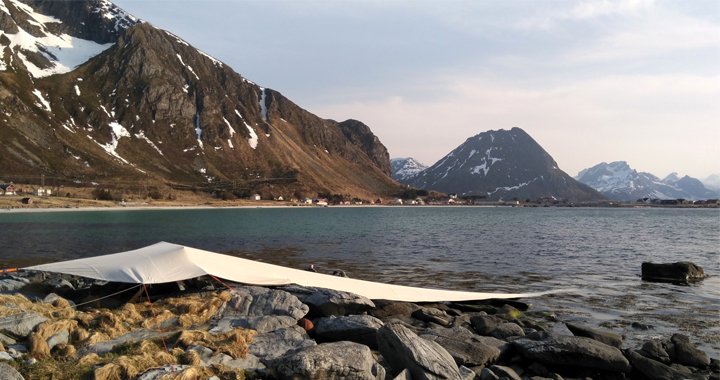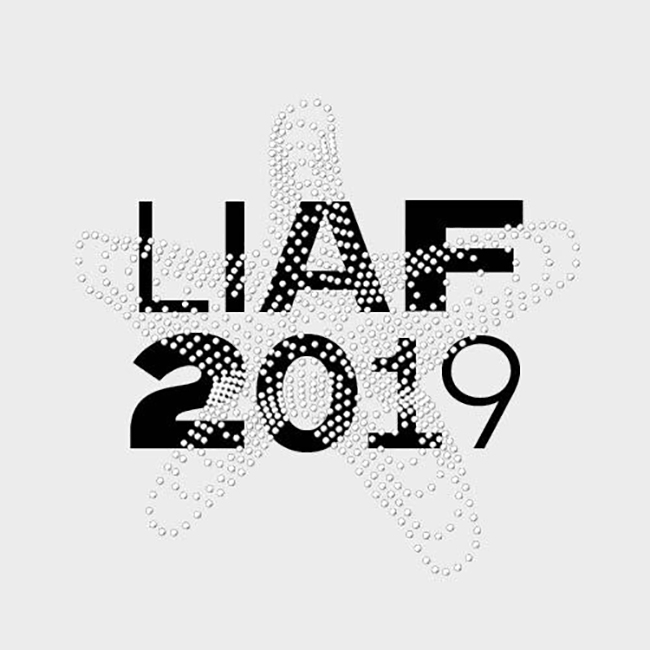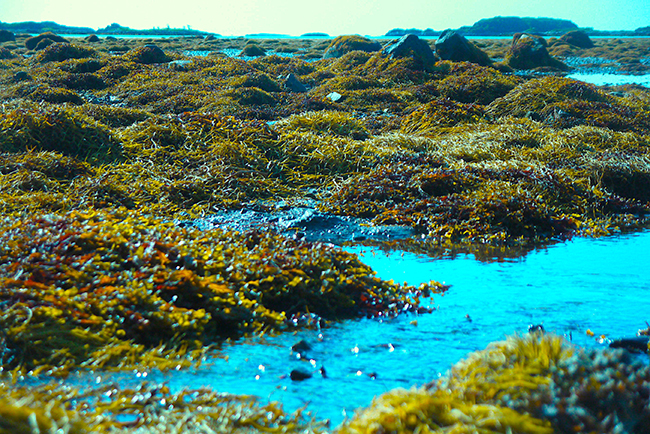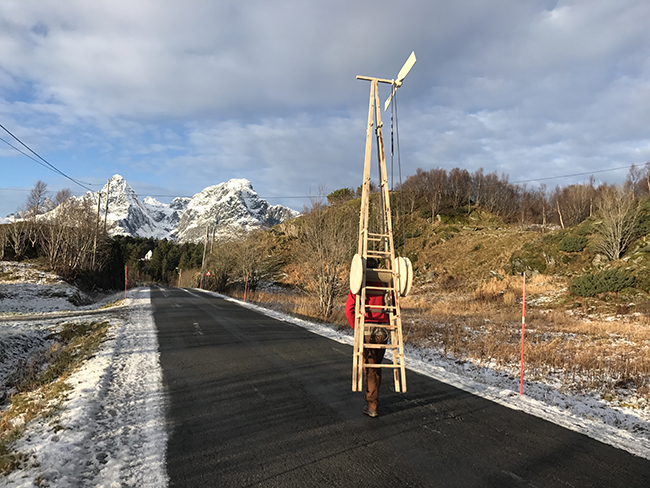
The island festival
Express-interview with the curatorial team of LIAF 2019
02/09/2019
From August 30 to September 29, Svolvær municipality in Norway will be filled with art and other cultural events. Lofoten International Art Festival, or LIAF, this year brings together an impressive programme of art exhibitions, performances, public talks, concerts and films. More than 40 vivid artists are joining the curatorial companion of the 2019 edition of LIAF – starfish – to take over various venues around Svolvær.
This year the curatorial concept of LIAF takes its inspiration from the multitude of inhabitants, materials, struggles, and processes that reside and take place within the extremely wide intertidal zone surrounding the Lofoten islands. “Cyclical, turbulent, ruthless, and beautiful, LIAF opens up four conversations in dialogue with this environment, to observe the space diminishing and expanding, and following its liminal ebbs and flows,” says the introductory text of the festival. We invited the curators of the festival - Hilde Methi, Neal Cahoon, Karolin Tampere, and Torill Østby Haaland – to tell a little more about the concept of LIAF 2019 and what to expect from this year’s event.

2019 marks the 20th year since LIAF has been given an international profile and the 10th anniversary since it has been run by The North Norwegian Art Center. What did you have in mind when preparing for this year’s art festival?
We see the history of LIAF as going even further back, as it started as a regional festival already in 1991 and gradually turned into an international biennale. When we started working on LIAF 2019, we were aware that 1999 was considered a milestone. However, instead of looking back, we’ve considered it more fitting to look forward, and to continue with the spirit of the festival by moving in new directions. LIAF does not have a permanent place or setting within Lofoten – each exhibition has had a temporary home – and the festival has taken on many different approaches with each new edition.
For LIAF 2019, we sought to have a more expansive relationship with the islands through several artist-in-residence productions taking place in different areas of Lofoten. This edition has had more of a long-term approach in mind, with many local events curated throughout the year. These engagements have shaped the exhibition and public programme of events – called High Tides – taking place during the exhibition month in September.
What is the curatorial core of LIAF 2019?
LIAF 2019 takes its inspiration from the multitude of inhabitants, materials, struggles, and processes that reside and take place within the extremely wide intertidal zone surrounding the Lofoten islands. Among them creeps the starfish – with an eye on each arm, a witness to several events at once.
One can therefore say that we’ve been inspired by an ancient creature that sees/senses in several directions at the same time. Our own curatorial arms form conversations that have been geographically and conceptually spread out within Lofoten throughout the year.
There are therefore many “cores” to the curatorial, and our interest has settled on pluralities, rather than focusing like a spotlight on one particular theme.

This year LIAF is composed of five curatorial “arms” – please tell a little more about each one of them!
The curatorial “arms” of LIAF are both guiding and guided by places, and by artistic ideas and processes.
The arms are pointing in several directions: From the horse’s mouth is the arm that considers resilience, community, messages, and communication from human and other-than-human perspectives. Thinking tide, sensing scale draws attention to (natural) phenomena and the apparatuses through which events are sensed and measured. Splash, stress & elasticity is the arm that considers the high tides of migration, seasonal tourism, competition, space, and cycles. Maths, matter & body observes the relationships and tensions between the human body, solid matter, algorithms, gravity, and statistics. There is also an arm dedicated to the unspecified...
The art festival this year has an impressive number of artists. On what principles did you choose the participants?
The list is long this year, and that has to do with how we have increased the visibility of the contributors for the live events and how we are thinking of the festival as a whole. The exhibition artists are one element of the festival, and we did not have any single specific principle when we extended the invitations – some artists were invited based on how their previous work or current practice resonated with the conversations on the curatorial arms, while the work of some artists actually inspired the conversations on the arms themselves, so it has been a really dynamic process. What is interesting now is how things are fitting together when they arrive in the same place. Now we can start to read work that was based on one arm through the prisms of the conversations on other arms, and this has lead to many unexpected connections.
A no less significant question applies to the venues of the festival. What places will welcome the visitors of LIAF this year?
“Lofotpostbygget” – the Svolvær building that once housed production of the major regional newspaper “Lofotposten”, is the chief exhibition space for the LIAF 2019 show. The building was constructed in 1963 with printing presses and production facilities spread across four storeys. Extensive renovation will begin in the autumn of 2019, with the building soon to become an apartment complex. LIAF 2019 will adopt the site as it is now, gutted of its furnishings – creating several large open spaces – so that the emphasis will be on the artworks presented within the building, in the building’s special architectural characteristics, its history, and its placement on the waterfront.
Parts of the LIAF 2019 exhibition will be shown at the North Norwegian Art Centre's gallery, centrally located beside Svolvær’s market square. NNKS is an art institution which engages in comprehensive activities across all of northern Norway, and has owned and run LIAF since 2009.
There are also several other venues that will be activated during our programme of live events in September. These include Svolvær Film Theatre, The Old Second Hand Shop, as well as other public spaces in Svolvær.
